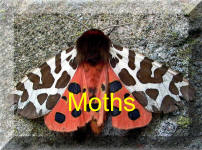Moths >Noctuidae » Xyleninae
Wingspan 27-30 mm.
Description Variable in colour. Forewings range in colour from light to dark brown. The reniform stigma is large, usually lobed, with a smaller white-lined stigma inside. Orbicular stigma is generally inconspicuous. Antemedian and post median lines irregular and strongly indented. Termen area is normally darker and clearly seen on paler individuals. Hindwing dark fuscous becoming lighter towards the base with a paler fringe.
Similar Species: Small Clouded Brindle A. unanimis which has a dark basal streak on the forewing and a paler hindwing. Separation from Lesser Common Rustic M. didyma requires examination of genitalia.
Requires examination of the genitalia to confirm identification due to close similarity to Lesser Common Rustic M. didyma.
Key Identification Features:
- Fine white mark on the forewing
- Strongly curved crossline
- Dark hindwings with the paler fringe
Habitat Grassland species found in a wide variety of habitats. Adults rest and are concealed among vegetation by day and become active after dark. They frequent light and also to flowers, especially Common Ragwort Senecio jacobaea, Buddleia Buddleja davidii and marsh grasses. The larvae feed from autumn until May inside the stems of various grasses on Cock's-foot Dactylis glomerata and other grasses.and tall fescue (Festuca arundinacea). It overwinters as a larva.


